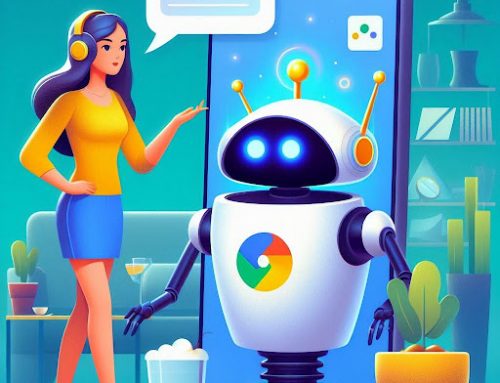ChatGPT-4 vs ChatGPT-3
Latest Articles
March 12, 2024
ChatGPT-4 has sparked a passionate debate within the tech community and raised questions about the future of AI language models. The ChatGPT-4 claims to push the boundaries of possibility even further than its predecessor, ChatGPT-3, which became a game-changer in text generation and language comprehension.
In which model does AI rule supreme, and what are the implications for its future? Taking a closer look at each model’s strengths and weaknesses will help us answer these questions.
Proven and Credentialed ChatGPT-3
Its capabilities across multiple formats have demonstrated ChatGPT-3’s impressive track record. Whether it is emails, poems, scripts, or musical pieces, it can craft human-quality text that has revolutionised the way we interact with technology. ChatGPT-3’s versatility has proven invaluable to writers, marketers, and businesses, whether crafting engaging social media ads or generating realistic chatbot dialogue.
Additionally, it can translate languages accurately and answer complex questions in an informative manner, making it a valuable tool for educators, researchers, and students. Allowing language translation on the fly facilitates seamless communication across borders while answering complex questions comprehensively empowers individuals to gain access to information and expand their knowledge.
ChatGPT-3’s intuitive functionality and user-friendly interface have contributed to its widespread adoption. Even users with little technical expertise can exploit its vast capabilities, fostering a vibrant user community and driving innovation across industries. Individuals and organisations of all sizes have been able to leverage the power of advanced AI technology because of this accessibility.
Behind ChatGPT-3’s user-friendly appearance lies a powerful engine. A massive 175-billion parameter architecture enables it to gain insight and understanding from a staggering amount of data. This vast knowledge base makes Research and information retrieval possible, allowing the users to access an immense amount of information.
The Cutting-Edge Challenger, ChatGPT-4
Compared to its predecessor, ChatGPT-4 is armed with significant advancements. Through its enhanced natural language processing (NLP) capabilities, it can decipher complex queries and prompts more accurately and sophisticatedly. Users can thus engage in a more natural and engaging dialogue with the model through these more realistic and exciting interactions.
Besides its capability to process text and images, it is also one of the first to do so. Thus, ChatGPT-4 is able to generate captions for photos, translate visual content, and answer questions about pictures with remarkable insight. As a result, this feature holds immense potential for the future, paving the way for more inclusive and accessible services, education, and accessibility.
ChatGPT-4 boasts remarkable improvements in text generation beyond its advanced NLP and multimodal capabilities. Enhanced context windows, which can remember over 25,000 words of prior conversations, make it easier to respond coherently and consistently to your customers. Ultimately, this improves storytelling, poetry writing, and code generation, empowering creators to discover new artistic avenues and push their boundaries.
Ethical Concerns and Potential Roadblocks

It is undeniable that ChatGPT-4 has advanced, but some issues still need to be resolved. Its complexity and reliance on vast computational resources might make it inaccessible to a broader audience. A digital divide could result, with only those with powerful hardware and resources able to take advantage of this advanced technology.
Moreover, data training may lead to bias, which poses an important ethical issue. In the event that ChatGPT-4 is trained on biased data sets, those biases may be perpetuated in its outputs. Consequently, hiring decisions and loan approvals could be discriminatory. The solutions to these issues will play a critical role in ensuring that AI technology is developed and utilised responsibly, minimising potential risks and maximising its positive impacts on society.
The Future: A Collaborative Symphony
A collaborative relationship between ChatGPT-3 and ChatGPT-4 is the key to the future, not a winner-take-all scenario. A comprehensive and versatile AI solution can be offered by combining the strengths and capabilities of each model. Combined with ChatGPT-4’s advanced features, ChatGPT-3’s vast knowledge base and ease of use can lead to even more significant advancements in language understanding and content creation.
The collaboration and synergy between these two models will undoubtedly shape the future of language models and their impact across various domains as AI continues to evolve. The ongoing dialogue between innovation and experience is critical to unlocking the full potential of AI and shaping a future where technology enhances human capabilities, fuels creativity, and fosters a more inclusive and accessible society.
There are endless possibilities. Imagine a future where intelligent assistants powered by ChatGPT-3 and ChatGPT-4 handle complex tasks flawlessly, leaving humans free to:
Invest in Creativity and Innovation:
With no mundane routines and repetitive tasks to distract them, people can pursue creative endeavours, explore new ideas, and push the boundaries of art, science, and technology. Think of how artists could create masterpieces without the limitations imposed by technical skill, how scientists could conduct groundbreaking research without being constrained by time or resources, and how entrepreneurs could launch innovative ventures without being restricted by bureaucracy.
Nurture Relationships and Build Stronger Communities:
With AI assistants handling daily chores and errands, individuals have more time and energy to spend with those they care about. Family bonds could be strengthened, communities could be more vibrant, and human connections could be renewed. Imagine grandparents spending quality time with their grandchildren, friends engaging in stimulating conversations without interruptions, and neighbours collaborating on community projects with renewed enthusiasm.
Explore and Learn with Limitless Curiosity:
The use of AI-powered tutors and learning assistants can personalise and optimise education for each individual. By democratising access to knowledge, individuals can pursue lifelong learning and foster a culture of curiosity and exploration. AI assistants tailored to each child’s unique needs would guide children through learning at their own pace, exploring diverse subjects, and discovering hidden talents.
Engage in Meaningful Work and Contribute to a Better World:
Automation allows humans to focus on meaningful work, such as contributing to the greater good, rather than mundane tasks. By empowering individuals to contribute their unique skills and talents to solving the world’s most pressing challenges, we can create a more equitable and sustainable future.
Imagine healthcare professionals devoting their time to patient care and research, environmental scientists focusing on conservation efforts, and social workers providing personalised support to those in need, all aided by AI assistants who handle administrative tasks and data analysis.

Embrace Leisure and Enhance Well-Being:
As AI handles the mundane, individuals have more time for hobbies, physical activities, and mental and emotional well-being. Increased leisure time could benefit a healthier, happier population by reducing stress levels, improving mental health, and rekindling a sense of purpose and fulfilment. With AI assistants managing schedules and prioritising individuals’ well-being, individuals can pursue their passions, engage in physical activities they enjoy, and participate in cultural events.
The potential benefits of collaborating between ChatGPT-3 and ChatGPT-4 are extensive and far-reaching. In the coming years, these models have the potential to usher in a new era of human progress in which technology empowers individuals to fulfil their full potential, enhance their well-being, and contribute to a brighter future.






